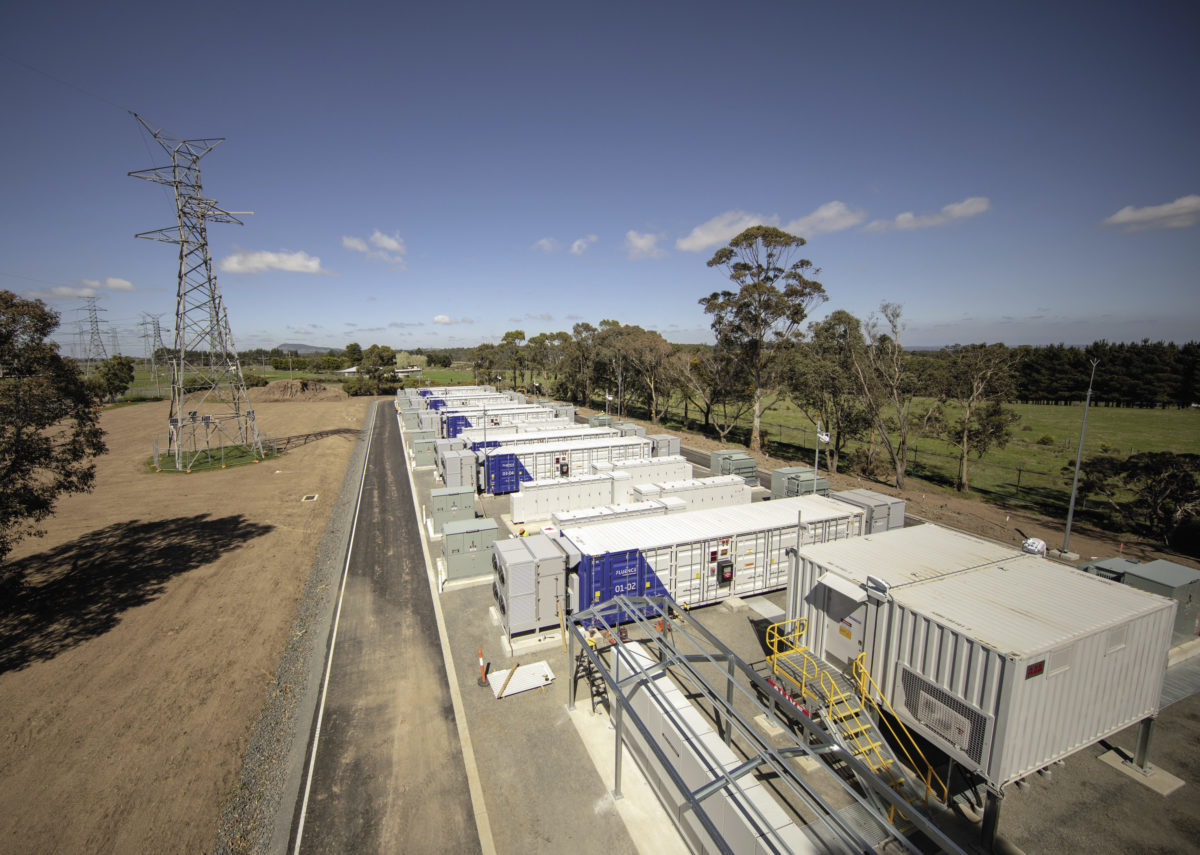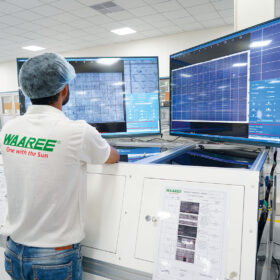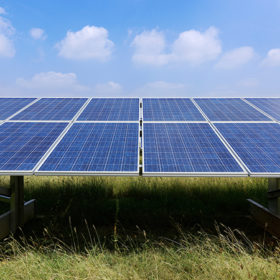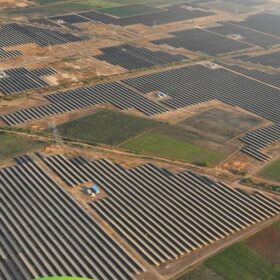The growing dominance of lithium iron phosphate (LFP) chemistry in stationary energy storage systems (ESS) has been the most significant development in the storage sector over the past two years, experts set to speak at the NetZero conference in Italy this week told pv magazine.
LFP batteries have gained ground due to their improved safety, longer cycle life, lower cost, and stable performance, said Daniel Fuchs, chief customer officer at EUPD Research.
“Additionally, the emergence of more utility-scale storage projects is driving rapid innovation in storage technology, improving energy density, scalability, and integration with renewable energy sources,” Fuchs said in preparation for its keynote opening speech at NetZero Milan Expo-Summit 2025, organized by FieraMilano and scheduled to take place from May 14 to May 16 in Milan, Italy.
Over the past few years, LFP chemistry has risen to dominance in the battery sector, with standardized cell formats and enclosure designs enabling major economies of scale, performance gains, frequency improvements, and cost reductions, said Giuseppe Artizzu, CEO at NHOA Energy.
Incremental innovation
“This wave of incremental innovation has now leveled, and we are now seeing the introduction of larger cells, which in turn could trigger new concepts in enclosure design,” said Artizzu. “The incredible competitiveness of LFP batteries raises the bar for promising alternative chemistries such as sodium ion.”
Rosa Milano, sales director for energy storage at Fluence, said lithium-ion remains the most mature and commercially viable energy storage technology. Current innovations focus on three key areas.
“Firstly, in the field of optimized grid integration: advancements such as grid-forming capabilities, synthetic inertia, and dynamic frequency response enhance stability, thus increasing energy security, while enabling deeper integration of renewable energy sources,” said Milano.
The other two factors are adaptive deployment – such as noise reduction technologies and accelerated construction timelines – and improved financial performance, driven by “operational reliability exceeding 20 years.”
Orazio Sallemi, managing director of BayWa re Energy Trading, warned that further technological innovations outside electrochemical systems should not be overlooked.
“We are talking in particular about physical storage systems, such as compressible fluid storage and gravitational storage,” said Sallemi. “In addition, the development of optimization software, based on AI logic, can contribute significantly to the efficient utilisation of the storage system.”
Geopolitical risks
Several experts set to speak at the second vertical pv magazine is organizing as part of Net Zero said geopolitical factors – particularly the availability of critical raw materials such as lithium, nickel, and cobalt – could affect growth in the BESS market, as in the manufacturing sector more broadly.
“The current geopolitical landscape, particularly US-China trade tensions, could significantly affect the global battery supply chain. For instance, in 2024, approximately 25% of China’s lithium-ion battery exports were directed to the United States,” said Fuchs. “Any disruption in trade relations or the imposition of tariffs could create supply bottlenecks, raise costs, and slow deployment in US storage markets. Different segments of the storage industry may be impacted in varying degrees, with lithium-ion battery technologies likely to be the most affected due to their heavy reliance on Chinese manufacturing.”
Lithium-ion batteries, particularly those involving the Chinese supply chain, are likely to bear the brunt of geopolitical impacts due to their critical role in both EVs and stationary storage applications, said Fuchs.
Naomi Di Meo, communication officer at the Global Solar Council, said the storage situation is not as dire as for PV modules, thanks to “more diversification.”
Fuchs also noted other geopolitical risks putting pressure on the battery market. Developments in the Ukraine conflict could impact the storage market, depending on how the situation unfolds in the coming months.
“One example is the recent black out in Spain and Portugal,” added Fuchs. “The reason is still unclear, but once the market is affected by the rumors (sabotage, hack) this might affect the other European markets in their approach to storage, similar, but on a smaller scale, to what we saw in PV installation boom after the Russian invasion of Ukraine in February 2022.”
Milano said cybersecurity has become a fundamental aspect of battery storage technology, especially as digital infrastructure integrates more into energy systems.
“With growing geopolitical tensions, we’re seeing several key risks emerge that could significantly influence the sector. Firstly, operational. As cyberattacks on energy storage systems can lead to outages, preventing companies from accessing their systems,” Milano said. “This, in turn, results in revenue losses for providers and consumers who rely on these technologies. Secondly, regulatory challenges are becoming more prominent. Governments worldwide are starting to tighten cybersecurity laws for critical energy infrastructure, such energy storage is, and non-compliance can lead to severe financial penalties, sometimes amounting to millions of euros or a percentage of global revenues. This places a heavy burden on companies to ensure their systems are robust and secure.”
Risk mitigation
Geopolitical complexities could also have long-term consequences, said Orazio Sallemi, managing director of BayWa re Energy Trading.
“We traders really like price volatility because it translates into arbitrage opportunities with possible profit optimisation. But if you try to look a little beyond the short-term horizon, what might seem to be an impetuous upswing can then turn into a general slowdown of initiatives and consequently of buying and selling opportunities,” Sallemi said. “For this reason, the figure of the trader must always be ready to seize the opportunities that the contingent moment can offer, but we must always bear in mind that upstream and downstream in the value chain there are our partners, producers and end customers, who in turn need certainty and reasonableness, both in selling and buying.”
The trader said it is necessary to consider industrial and commercial resilience, anticipating potential shocks to both supply availability and the demand and supply of energy commodities.
“Topics such as geographical and technological diversification, the increasing use of AI applications, and finally the role of recycling and recovery of critical materials are food for thought and further investment in the near future,” added Sallemi.
NHOA Energy’s Artizzu said the lack of a competitive battery industry in Europe should be a top concern and an absolute priority for the continent’s industrial policy.
“Swift action should be taken to prevent dependence in battery technology from spilling into dependence in grid control, electric mobility, industrial automation. These are all well-established industries in Europe, with advanced technology and industrial capabilities,” added Artizzu. “Access rules to the European market should be actively managed to prevent aggressive price-based penetration strategies from displacing the continent’s existing strategic value chains. The Net Zero Industry Act and the Clean Industrial Deal are fundamental steps in this direction, and a broad consensus around their fundamental aims is needed, in order to improve their design and implementation in Brussels.”
Production costs
Sallemi said the learning curve of battery pack production costs has dropped from over $1,000/kWh initially to less than $140/kWh in 2023, with some large-scale solutions reaching even lower values.
‘Analysts are predicting an oversupply condition for the coming 2025-27 period with a further reduction in prices that should soon reach and cross the psychological threshold of $100/kWh, which can also be achieved thanks to the development of new chemistries such as lithium-iron-phosphate (LFP), the advancement of solid-state batteries and finally the consolidation of more efficient production chains,’ said Sallemi. ‘Topics such as geographical and technological diversification, the increasing use of AI applications, and finally the role of recycling and recovery of critical materials are food for thought and further investment in the near future.”
The above experts are among the speakers at the second vertical session organized by pv magazine. Tickets for the Milan conference are available with a 20% discount using code 7600199855.
This content is protected by copyright and may not be reused. If you want to cooperate with us and would like to reuse some of our content, please contact: editors@pv-magazine.com.








By submitting this form you agree to pv magazine using your data for the purposes of publishing your comment.
Your personal data will only be disclosed or otherwise transmitted to third parties for the purposes of spam filtering or if this is necessary for technical maintenance of the website. Any other transfer to third parties will not take place unless this is justified on the basis of applicable data protection regulations or if pv magazine is legally obliged to do so.
You may revoke this consent at any time with effect for the future, in which case your personal data will be deleted immediately. Otherwise, your data will be deleted if pv magazine has processed your request or the purpose of data storage is fulfilled.
Further information on data privacy can be found in our Data Protection Policy.